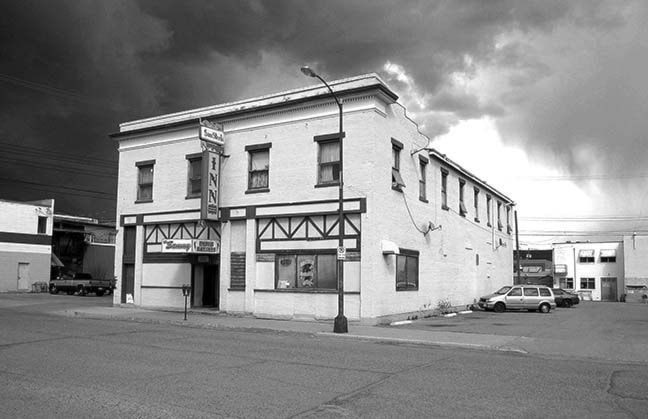Jim Cameron
In the earliest days, the town of Cranbrook grew in such a way as to define certain aspects of the community to the present day.
The CPR yards formed the initial focal point with businesses and residential areas fanning out to the east and west.
The west side did not fan well due in part to the separation from greater Cranbrook by constant rail traffic.
To the east of the CPR, along Van Horne, Baker and Cranbrook Streets, lay the business district. The area nearest the tracks was taken by hotels and businesses or other pursuits commonly accompanying the CPR at the time: small rail-related industry, Chinatown, and the red-light district.
Much of the nearby housing — single lot, one-storey cottages — was occupied by railway and lumber workers. Beyond that the city grew, dictated in part, according to the placement of now removed creeks and marshes.
The initial growth in the area between 1st and 9th Avenue and Baker to 2nd Street required ensuing home owners to construct their (often larger and more elaborate houses) in the area known as Baker Hill and further east along Joseph Creek.
The red-light district and Chinatown eventually disappeared to be replaced primarily by light industry and business.
Throughout the early years Hanson (8th) Avenue, between Baker and 1st Street, more or less functioned as a buffer between the blue-collar to the west and the white-collar to the east. It became an avenue of garages, repair shops and small, often temporary, businesses, a character, or perhaps lack of it, that has continued to the present day.
It was upon this street that Leroy Sage built his shoe/second-hand shop in 1904. Mr. Sage died in 1905, leaving the property in the hands of the executors of the estate who, in 1907, sold it to pioneer Cranbrook Hotel owner James Ryan, who, in 1909, sold it to local grocery merchants Joseph Campbell and Ira Manning.
The partners undertook to construct a rental space known as the Campbell and Manning Block, hiring local contractor George Leask to erect the superstructure in October, 1911.
Within a month the bricklayers were working apace and the result, by January, 1912, was a two-storey brick building with two stores (whose large plate glass windows have long since been filled in) and storage space on the ground floor, at least 17 rental bedrooms on the second floor and a four-lane, 10-pin bowling alley in the basement.
It seemed a perfect recipe for success. It wasn't quite.
If not the location then certainly the recession of the First World War hurt rentals for the Campbell and Manning enterprise as it did not fare as well as might be expected. The stores were transient; a confectionery, a general merchant, a taxidermy, a furniture repair shop, a restaurant and numerous other undertakings over the next few years. The upstairs rooms were originally rented to the nearby Cranbrook Hotel while a hotel annex was being constructed across the street but that was only temporary.
While it was without doubt the most attractive building on the block and one of the most substantial in the business district, it doesn't appear to have quite lived up to expectations. The bowling alley, though popular at times, ran intermittently during the next five decades.
Campbell and Manning dissolved their partnership in 1913. At the time they also owned both the Cosmopolitan Hotel and their long-standing grocery business. Although Mr. Manning took the grocery and Mr. Campbell took the Cosmopolitan, they apparently retained joint ownership of the business block.
In May of 1920, Messrs Joseph Maripodi and Egisto Bigattini purchased the property which became known as the Venezia Hotel. It was a baptism under fire for Egisto Bigattini who awoke in his hotel room during the early morning hours of May 27, 1920, to find a man rummaging through his effects. A scuffle ensued in which Mr. Bigattini was shot in the abdomen. The assailant made his escape through a window onto a roof only to return a short time later while the police were investigating. He was immediately identified by his victim and arrested.
Although Mr. Bigattini suffered a rather large loss of blood he was back on his feet within a week. The ensuing trial attracted much local attention not least due to the fact that Mr. Bigattini accused his attacker, Charles De Palmer of Fernie, of approaching him earlier in the week with a proposition to provide women prostitutes to work out of the hotel on a regular basis, an offer which Bigattini claimed he refused.
De Palmer was tried, found guilty and sentenced to 18 months of hard labour in the Nelson jail.
The hotel never quite shook the somewhat unsavoury reputation garnered during the incident and ongoing liquor infractions didn't help. It was later purchased by the Provenzano brothers, sold to Joe Lipovski in 1955 and, in turn, to Tom Chittick and Stan McKay in 1968. It was this partnership that renamed it the Sam Steele Hotel during the city's annual Sam Steele Days in August, 1969.
For the next 30 years the Sam Steele Hotel settled in as a more-or-less genial neighbourhood pub, attracting pretty much one of everything that the neighbourhood had to offer. The interior was renovated a few times; doorways filled in, the exterior painted white and odd little bits of decoration added. The bowling alley sat unused. Following the turn of this century the hopeful heritage building became a strip joint, which it remains.
